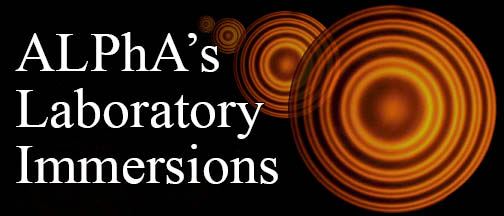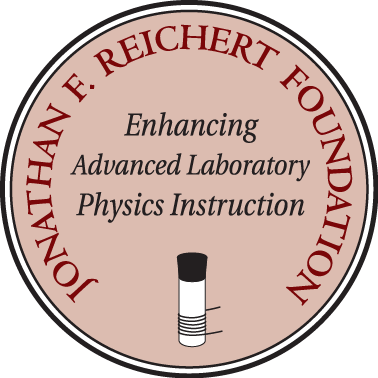- Home
- What We Do
- Laboratory Immersions
- Immersions 2025
- Imm2025Winona_RadioTelescope
Winona State University, Winona, MN
Evidence for Galactic Dark Matter with CHART –
the Completely Hackable Amateur Radio Telescope
July 24, 2025 to July 26, 2025
Number of setups available: 4
Maximum number of participants: 8
------------------------------------------------------------------------------------------------------------------------------------------
Dark matter is one of the most unexplained mysteries in physics. It comprises 85% of the mass of the universe, but we can only indirectly detect its effects on luminous matter, with direct detections eluding us to date. A foundational piece of evidence for dark matter is the faster than expected rotation of spiral galaxies, given the observed luminous matter.
This Immersion will probe the effects of dark matter on our own Milky Way galaxy by measuring doppler shifted radio emission from the neutral hydrogen hyperfine transition with DIY radio telescopes.

Figure 1: CHART setup and components
The Completely Hackable Amateur Radio Telescope (CHART, https://astrochart.github.io) was designed to give hands-on instrumentation experience to students at a low cost and low barrier to entry. We will build our own implementations using cardboard, aluminum foil, off-the-shelf RF electronics, a software defined radio, and a raspberry pi (see Figures 1 and 2). We will plan observations and collect data. Calibration and analysis of the data will reveal the rate that the galaxy rotates about its center, which is faster than predicted from luminous matter.
 Figure 2: Students observing the galaxy with CHART
Figure 2: Students observing the galaxy with CHART
Skills that will be acquired performing the experiment include:
- Constructing and testing a radio telescope
- RF electronics design
- Digital signal processing
- Data analysis using python
Schedule:
Day 1 morning: Intro to radio astronomy, signal processing, and the CHART project
Day 1 afternoon: Build telescopes, plan observations, test telescopes if time
Day 2 morning: Testing, Observing
Day 2 afternoon: Start data analysis - reading/visualizing data, RFI excision, calibration
Day 3 morning: Complete data analysis - comparing to models, building rotation curve, present results
Participants should plan to bring their own laptop (no special software required).
Approximate cost to implement:
$100 - required experiment specific equipment
$170 - raspberry pi setup (optional if using own laptop)
$30 - common tools (glue gun, box cutter, etc)
Host and Mentors:
 Adam Beardsley is an Assistant Professor of Physics and General Engineering at Winona State University. He received his BS in Physics, Mathematics, and Astronomy from the University of Wisconsin in 2009 and his PhD in Physics from the University of Washington in 2015. He was a postdoc at Arizona State University, where he also received the NSF Astronomy and Astrophysics Postdoctoral Fellowship. His research is at the interface between instrumentation and data analysis for low frequency radio astronomy observatories, and he focuses on bringing impactful research projects to undergraduate students.
Adam Beardsley is an Assistant Professor of Physics and General Engineering at Winona State University. He received his BS in Physics, Mathematics, and Astronomy from the University of Wisconsin in 2009 and his PhD in Physics from the University of Washington in 2015. He was a postdoc at Arizona State University, where he also received the NSF Astronomy and Astrophysics Postdoctoral Fellowship. His research is at the interface between instrumentation and data analysis for low frequency radio astronomy observatories, and he focuses on bringing impactful research projects to undergraduate students.
 Lindsay (‘Libby’) Berkhout is a Trottier Space Institute Fellow at McGill University in Montreal. She received her PhD in Exploration Systems Design (Instrumentation) and was a National Science Foundation Graduate Research Fellow at Arizona State University. She earned a BS in Astronomy & Astrophysics from the University of Chicago in 2019. Her research focuses on radio frequency instrumentation.
Lindsay (‘Libby’) Berkhout is a Trottier Space Institute Fellow at McGill University in Montreal. She received her PhD in Exploration Systems Design (Instrumentation) and was a National Science Foundation Graduate Research Fellow at Arizona State University. She earned a BS in Astronomy & Astrophysics from the University of Chicago in 2019. Her research focuses on radio frequency instrumentation.
 Danny Jacobs is a Professor in the School of Earth and Space Exploration at Arizona State University. He holds a BS in Physics from New Mexico Institute of Mining and Technology in 2004, an MS in Physics from Montana State University in 2006, and a PhD in Physics from University of Pennsylvania in 2011. His research focus is the observation of primordial Hydrogen in the low frequency radio.
Danny Jacobs is a Professor in the School of Earth and Space Exploration at Arizona State University. He holds a BS in Physics from New Mexico Institute of Mining and Technology in 2004, an MS in Physics from Montana State University in 2006, and a PhD in Physics from University of Pennsylvania in 2011. His research focus is the observation of primordial Hydrogen in the low frequency radio.
Please note that the Jonathan F. Reichert Foundation has established a grant program
to help purchase apparatus used in Laboratory Immersions. Limitations
and exclusions apply, but generally speaking the Foundation may support
up to 50% of the cost of the required equipment.




